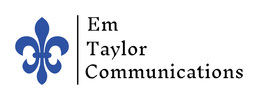I have bad days when I say the wrong things, think bad thoughts, and feel generally crusty towards the world; on such days, I tend to stir up unnecessary conflicts in my life. We all have these days when we figuratively splurge on our bad conflict habits.
But, despite consuming the “Big Macs” of personal conflict on the bad days, we need to try to avoid the unnecessary conflicts of life on a regular basis because “you just feel better when you do.” When we focus on the essential conflicts, we naturally begin creating the sense of purpose and meaning we desire in our most important personal relationships.
Like with food, we are surrounded by all kinds conflict temptations that will leave us feeling guilty, bloated, and less comfortable than we started with. The unnecessary conflicts of life are like the binge foods that may feel good in the moment, but leave us feeling worse afterwards.
Conflicts—or differences that matter to one or more person—are natural for us. In our society, we are surrounded by all kinds of conflicts, both large and small, as well as the important and unimportant. Of course, we have differences of opinion, taste, temperament, style and so on in our various human relationships. As unique individuals, we will naturally differ from each other. But too often, we spend far too much time and energy dealing with unnecessary conflict in our lives rather than focusing on effectively dealing with the most important conflicts in our lives.
Figuratively, we inhale the Twinkies of bad, fluffy conflict habits when we should focus on the whole grains of human relationships that could create opportunities for innovation, greater human intimacy, and a sense of true human connection.
For example, how much emotional energy do we waste on getting angry with a lame driver during our commute to and from work? Are we gossiping about a co-worker’s bad habits, creating tension in the workplace, while we neglect working through a pressing issue at home?
When you read through these examples of empty calorie conflicts, you may think, “Duh, I already know that!” However, I’m going to ask you to be a little more self-reflective because our cultural habits of “binge” individualism and conflict have become increasingly pervasive.
EMPTY CALORIE CONFLICTS
Personal Physical Habits
Being late
Forgetting important appointments, events, people’s names, and following up within expected time frames
It may sound silly, but even when I’m running five minutes late for an appointment at the doctor’s or with a friend, I will call. Just 30 seconds of my time seems to lessen the potential for conflict among close and distant associates.
We all know the old adages about returning something borrowed in good time in order to avoid creating conflict with the lender. How often have I held onto something that causes guilt even though it would be simple to return a borrowed item. Many years ago, I borrowed a book from a neighbor—I still have not returned that book, but I think about it often. While the book sat in my drawer, I avoided talking with the neighbor because I felt guilty.
Not exercising
Do I feel lethargic and frumpy in my clothes because I haven’t exercised in weeks? Can I sense that I am overly irritated when others talk about all their 5Ks when I haven’t even gotten on the treadmill this year?
Skipping Meals
I may create conflict simply because I’m hungry. In some ways, I’m no better than a two-year old when it comes to low blood sugar. I know that I need a constant stream of food, so I carry around granola bars in my purse. When staying overnight with friends, I regularly inform them of my funny habit of eating at night. I simply cannot sleep if I am hungry. Usually, I have an extra box of Kind bars in my suitcase just in case I become a shy house guest unable to share my funny habits with others.
Staying up too late so we’re constantly tired
If you’re reading this blog post at night, you should probably just go to sleep. Again, we are no different than young children. When we don’t get enough sleep, we can become super irritable or just plain sleepy. We may not remember conversations very well and speed through our personal relationships simply because we’re tired.
Avoiding taking care of a critical health issue, physical or mental, such as an addiction or source of pain
In our individualistic society, we tend to think that our personal habits just affect us personally, but very simple health issues may affect our loved ones, friends, and acquaintances and fuel unnecessary conflict and dissatisfaction. You can powerfully address personal conflict by addressing critical health—either physical or mental—issues alongside any addictions.
Personal Communication Skills or Habits
There are many personal communication skills and habits that will enhance our relationships with each other and prevent unnecessary conflict. In this post, I focus on just two areas of concern: (1) not listening and (2) unorganized family communication habits. As we focus on these communication essentials, we will slowly gain the motivation to tackle the other larger communication issues we face.
Not listening
Too often, even when we say we’re listening, we’re preparing what we’ll say in response. Instead of connection, we create distance through unhealthy patterns of not listening, especially to our loved ones.
Unorganized Family Communication Habits
With the diversity of family make-ups, personalities, and habits, there are a myriad of topics we could discuss. But, to get you started, I have identified a few key features that pop up in our family life:
Consuming and Digesting Conflicts Outside of our Control
We are inundated with information about local, national, and international conflicts that are mostly out of our control. We can spend countless hours and emotional energy reviewing and complaining about stressful events both at home and abroad.
Of course, we want to help out how we can, but do spend our energy complaining about the president rather than listening to child who is being bullied at school? When posed that way, it seems so obvious that we should focus on our most important relationships, but it is easy to get sucked in by far-away conflicts. Can we leave the news media conflicts to the side when necessary in order to deal with conflicts at home?
With the Internet and social media, we can easily get side-tracked into thinking about other conflicts beyond our control. We may have a legitimate role to play in addressing wider conflicts, but make sure you take care of your personal relationships first. Set your priorities and guard them closely.
QUESTIONS FOR PERSONAL REFLECTION
I didn’t write this post to give you a all a guilty conscience about how you handle the conflicts in your life. I actually have a generous motivation: spend your time on what matters most and decide to create habits that bring you contentment and connection rather than conflict fatigue.
We can choose to very positively influence the most important relationships in our lives by focusing on the high priority conflicts. When we are honest with ourselves, we can identify what we care about and begin to understand our power to influence the conflicts we encounter in our most important relationships.
For example, am I willing to go to bed a little earlier so that I don’t wake up my partner who is already sleeping? Many years ago, during one room-mate pow-wow about sleeping habits in our household of five, twenty-something women in D.C., I remember my roommate asking me, “Do you wear ear plugs?”
I had been complaining about not being able to sleep because I often heard the footsteps of roommates and guests above my basement bedroom, but I had only been demanding that others change their habits. Now, for about twenty years, I have worn ear plugs nearly every night to bed. A quick solution for a light sleeper like me that demanded a change in a personal habit rather than just a change in the behavior of those around me.
To guide toward a healthier conflict lifestyle, I have developed several questions that I am asking myself these days:
Identify the Empty Calorie Conflicts:
Make Personal Adjustments to Conflict Habits
FOCUS ON THE WHOLE GRAINS OF CONFLICT: The Conflicts that Matter
Most of us are familiar with Maslow’s hierarchy of needs that outlines in a pyramid form basic human needs beginning with physiological needs like breathing and ascending to the pinnacle of self-actualization. While we may be moving up and down that pyramid based on our personal circumstances, we need to take the time to figure out what personal conflicts matter most.
Speaking in dieting terms, we’re consuming way too many empty conflict calories. Frequently, we are focusing on the more meaningless conflicts in our lives that often reflect selfish personal habits or conflicts that we have no control over. Instead, we will find more peace and connection by focusing on the whole grains of collaborative problem solving in the conflicts that influence our most important relationships.
But, despite consuming the “Big Macs” of personal conflict on the bad days, we need to try to avoid the unnecessary conflicts of life on a regular basis because “you just feel better when you do.” When we focus on the essential conflicts, we naturally begin creating the sense of purpose and meaning we desire in our most important personal relationships.
Like with food, we are surrounded by all kinds conflict temptations that will leave us feeling guilty, bloated, and less comfortable than we started with. The unnecessary conflicts of life are like the binge foods that may feel good in the moment, but leave us feeling worse afterwards.
Conflicts—or differences that matter to one or more person—are natural for us. In our society, we are surrounded by all kinds of conflicts, both large and small, as well as the important and unimportant. Of course, we have differences of opinion, taste, temperament, style and so on in our various human relationships. As unique individuals, we will naturally differ from each other. But too often, we spend far too much time and energy dealing with unnecessary conflict in our lives rather than focusing on effectively dealing with the most important conflicts in our lives.
Figuratively, we inhale the Twinkies of bad, fluffy conflict habits when we should focus on the whole grains of human relationships that could create opportunities for innovation, greater human intimacy, and a sense of true human connection.
For example, how much emotional energy do we waste on getting angry with a lame driver during our commute to and from work? Are we gossiping about a co-worker’s bad habits, creating tension in the workplace, while we neglect working through a pressing issue at home?
When you read through these examples of empty calorie conflicts, you may think, “Duh, I already know that!” However, I’m going to ask you to be a little more self-reflective because our cultural habits of “binge” individualism and conflict have become increasingly pervasive.
EMPTY CALORIE CONFLICTS
Personal Physical Habits
Being late
- Do I have the habit of being late to important events? Do I hold up meetings, family gatherings, or even work phone calls because I am late?
- What am I willing to change about my scheduling habits to decrease unnecessary conflict?
Forgetting important appointments, events, people’s names, and following up within expected time frames
It may sound silly, but even when I’m running five minutes late for an appointment at the doctor’s or with a friend, I will call. Just 30 seconds of my time seems to lessen the potential for conflict among close and distant associates.
We all know the old adages about returning something borrowed in good time in order to avoid creating conflict with the lender. How often have I held onto something that causes guilt even though it would be simple to return a borrowed item. Many years ago, I borrowed a book from a neighbor—I still have not returned that book, but I think about it often. While the book sat in my drawer, I avoided talking with the neighbor because I felt guilty.
Not exercising
Do I feel lethargic and frumpy in my clothes because I haven’t exercised in weeks? Can I sense that I am overly irritated when others talk about all their 5Ks when I haven’t even gotten on the treadmill this year?
Skipping Meals
I may create conflict simply because I’m hungry. In some ways, I’m no better than a two-year old when it comes to low blood sugar. I know that I need a constant stream of food, so I carry around granola bars in my purse. When staying overnight with friends, I regularly inform them of my funny habit of eating at night. I simply cannot sleep if I am hungry. Usually, I have an extra box of Kind bars in my suitcase just in case I become a shy house guest unable to share my funny habits with others.
Staying up too late so we’re constantly tired
If you’re reading this blog post at night, you should probably just go to sleep. Again, we are no different than young children. When we don’t get enough sleep, we can become super irritable or just plain sleepy. We may not remember conversations very well and speed through our personal relationships simply because we’re tired.
Avoiding taking care of a critical health issue, physical or mental, such as an addiction or source of pain
In our individualistic society, we tend to think that our personal habits just affect us personally, but very simple health issues may affect our loved ones, friends, and acquaintances and fuel unnecessary conflict and dissatisfaction. You can powerfully address personal conflict by addressing critical health—either physical or mental—issues alongside any addictions.
Personal Communication Skills or Habits
There are many personal communication skills and habits that will enhance our relationships with each other and prevent unnecessary conflict. In this post, I focus on just two areas of concern: (1) not listening and (2) unorganized family communication habits. As we focus on these communication essentials, we will slowly gain the motivation to tackle the other larger communication issues we face.
Not listening
Too often, even when we say we’re listening, we’re preparing what we’ll say in response. Instead of connection, we create distance through unhealthy patterns of not listening, especially to our loved ones.
- Have I really listened to the other person or have I just been figuring out my rebuttal while the other person is talking?
- Have I interrupted before someone’s finished what they have to say?
- Am I known for being someone who cuts people off and tries to get in the last word?
- Have I asked any questions to make sure that I understand what the other person has said?
- When I disagree with something, do I accuse or blame rather than find out how the other person is thinking and feeling about an issue?
- Do I suspend my judgment until I’ve heard both sides of the story?
Unorganized Family Communication Habits
With the diversity of family make-ups, personalities, and habits, there are a myriad of topics we could discuss. But, to get you started, I have identified a few key features that pop up in our family life:
- Lack of a regular sit-down time to discuss calendaring and on-going issues
- Prioritizing time away from the family without focusing on regular family traditions and patterns for building relationships with each other
- Neglecting appreciation of those closest to me
- Not exercising so we feel sluggish and irritated
- Arguing about family rules when these should be discussed, agreed upon, and even revised
- Focusing on enforcing our preference or wants rather than basing our requests on real needs
Consuming and Digesting Conflicts Outside of our Control
We are inundated with information about local, national, and international conflicts that are mostly out of our control. We can spend countless hours and emotional energy reviewing and complaining about stressful events both at home and abroad.
Of course, we want to help out how we can, but do spend our energy complaining about the president rather than listening to child who is being bullied at school? When posed that way, it seems so obvious that we should focus on our most important relationships, but it is easy to get sucked in by far-away conflicts. Can we leave the news media conflicts to the side when necessary in order to deal with conflicts at home?
With the Internet and social media, we can easily get side-tracked into thinking about other conflicts beyond our control. We may have a legitimate role to play in addressing wider conflicts, but make sure you take care of your personal relationships first. Set your priorities and guard them closely.
QUESTIONS FOR PERSONAL REFLECTION
I didn’t write this post to give you a all a guilty conscience about how you handle the conflicts in your life. I actually have a generous motivation: spend your time on what matters most and decide to create habits that bring you contentment and connection rather than conflict fatigue.
We can choose to very positively influence the most important relationships in our lives by focusing on the high priority conflicts. When we are honest with ourselves, we can identify what we care about and begin to understand our power to influence the conflicts we encounter in our most important relationships.
For example, am I willing to go to bed a little earlier so that I don’t wake up my partner who is already sleeping? Many years ago, during one room-mate pow-wow about sleeping habits in our household of five, twenty-something women in D.C., I remember my roommate asking me, “Do you wear ear plugs?”
I had been complaining about not being able to sleep because I often heard the footsteps of roommates and guests above my basement bedroom, but I had only been demanding that others change their habits. Now, for about twenty years, I have worn ear plugs nearly every night to bed. A quick solution for a light sleeper like me that demanded a change in a personal habit rather than just a change in the behavior of those around me.
To guide toward a healthier conflict lifestyle, I have developed several questions that I am asking myself these days:
Identify the Empty Calorie Conflicts:
- Where are the empty calorie conflicts happening in my life?
- What role do I play in these unnecessary conflicts?
- What conflicts am I spending the most time on right now?
- What are the important conflicts in my life that should I be focusing on right now?
Make Personal Adjustments to Conflict Habits
- How could I adjust my personal habits to create more peaceful relationships with others, especially with those closest to me?
- What am I willing to change about myself so that I can get along better with others?
FOCUS ON THE WHOLE GRAINS OF CONFLICT: The Conflicts that Matter
Most of us are familiar with Maslow’s hierarchy of needs that outlines in a pyramid form basic human needs beginning with physiological needs like breathing and ascending to the pinnacle of self-actualization. While we may be moving up and down that pyramid based on our personal circumstances, we need to take the time to figure out what personal conflicts matter most.
- Are these conflicts about personal safety, love or belonging?
- Are these particular conflicts the most important to enhancing our closest relationships that we can directly influence?
Speaking in dieting terms, we’re consuming way too many empty conflict calories. Frequently, we are focusing on the more meaningless conflicts in our lives that often reflect selfish personal habits or conflicts that we have no control over. Instead, we will find more peace and connection by focusing on the whole grains of collaborative problem solving in the conflicts that influence our most important relationships.




 RSS Feed
RSS Feed